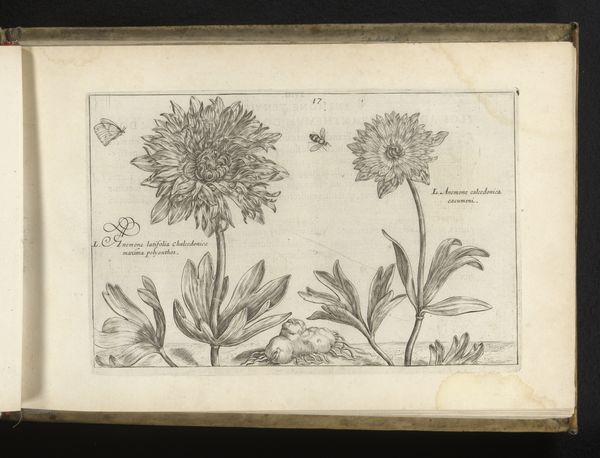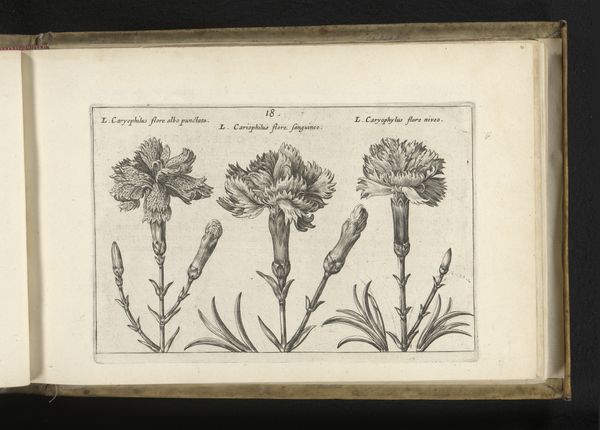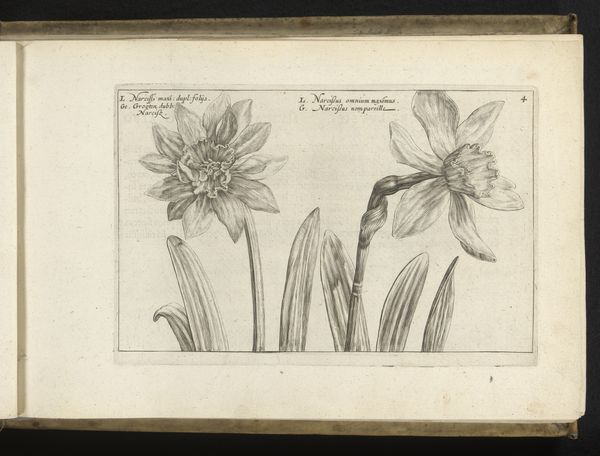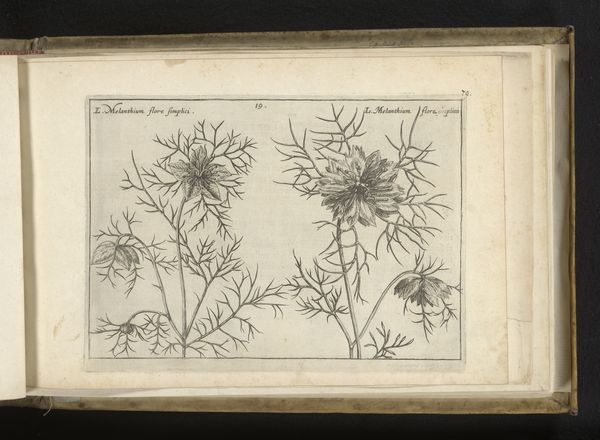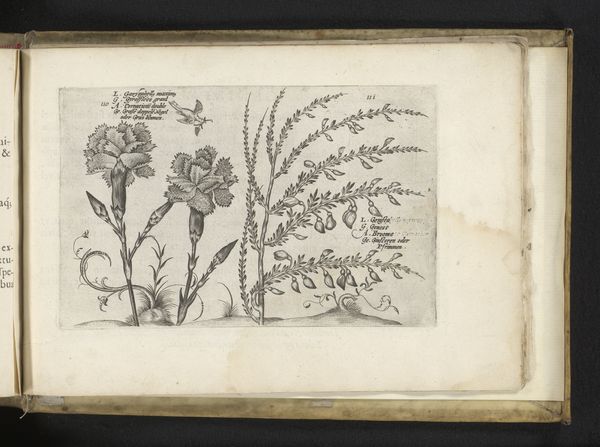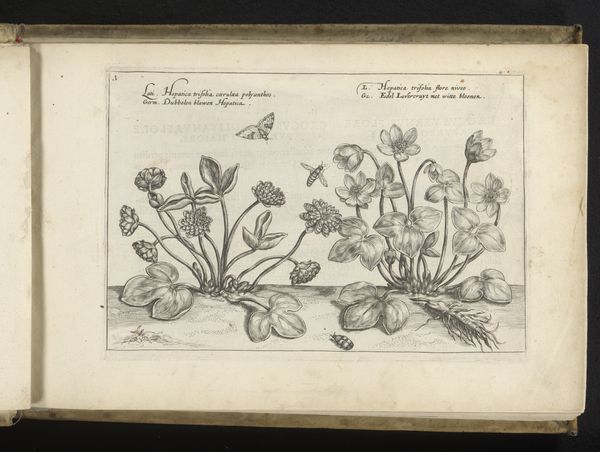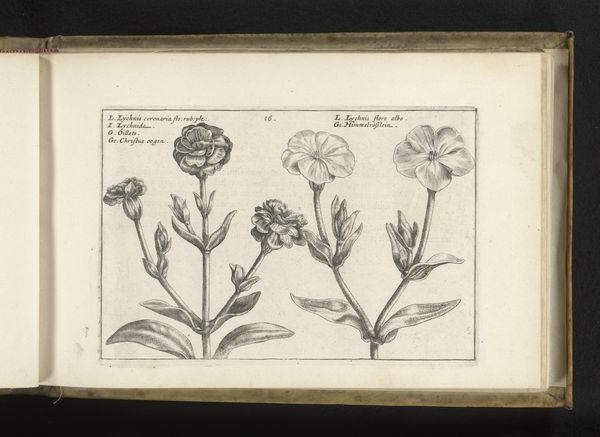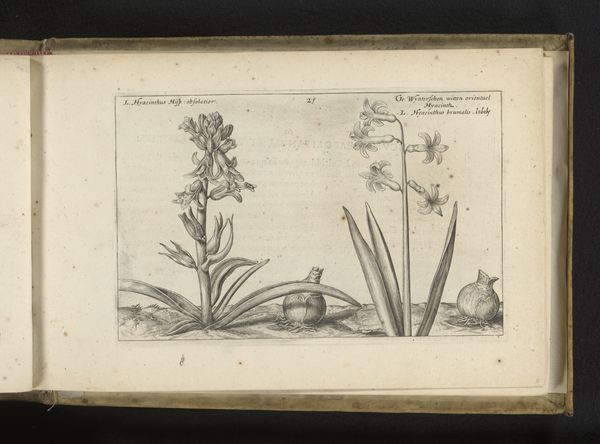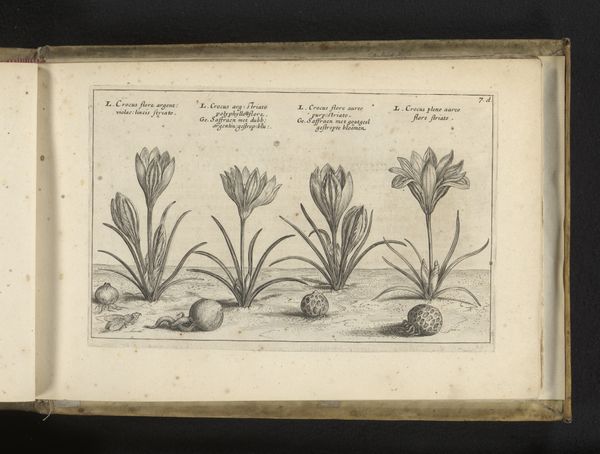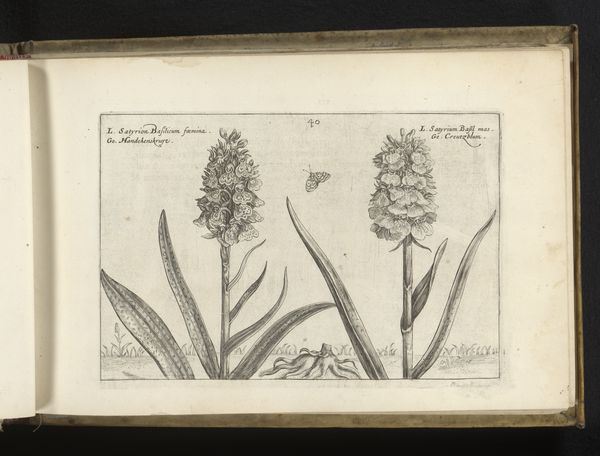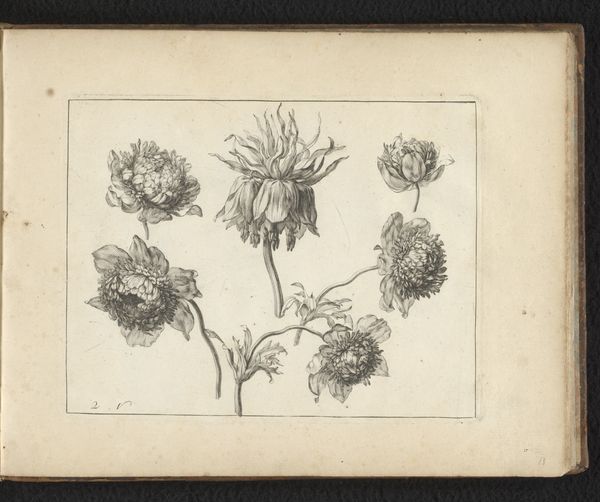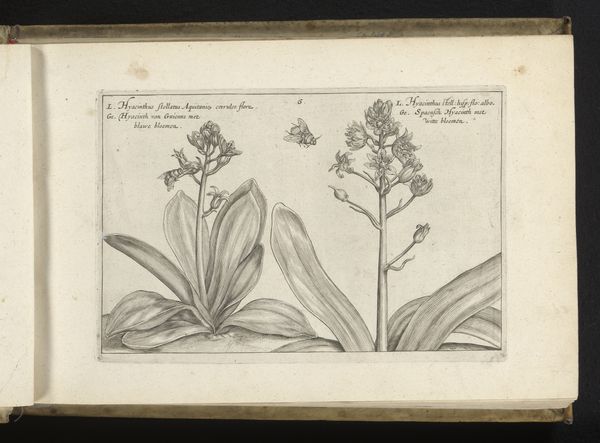
drawing, print, etching, ink
#
drawing
#
aged paper
#
toned paper
# print
#
etching
#
sketch book
#
flower
#
personal sketchbook
#
ink
#
pen-ink sketch
#
pen and pencil
#
pen work
#
sketchbook drawing
#
genre-painting
#
storyboard and sketchbook work
#
northern-renaissance
#
sketchbook art
#
realism
Dimensions: height 142 mm, width 212 mm
Copyright: Rijks Museum: Open Domain
This engraving of two types of carnations was made by Crispijn van de Passe the Younger, most likely in the Netherlands during the first half of the 17th century. As a botanical illustration, it reflects an emerging scientific interest in natural history and the classification of species. At the same time, we can note the increasing professionalization of art. Botanical illustration created a demand for specialized artists and printmakers trained to accurately depict plants for scientific purposes. Van de Passe belonged to a family of artists and publishers, demonstrating the importance of artistic dynasties and workshops in early modern Europe. The print comes from a book, reflecting the growing importance of print culture and the book trade in disseminating knowledge. To gain a fuller understanding of botanical illustration from the period, we might consult early scientific texts, botanical treatises, and archival records related to the art market and printmaking. Such resources can help to contextualize the intersection of art, science, and commerce in 17th-century Europe.
Comments
No comments
Be the first to comment and join the conversation on the ultimate creative platform.
